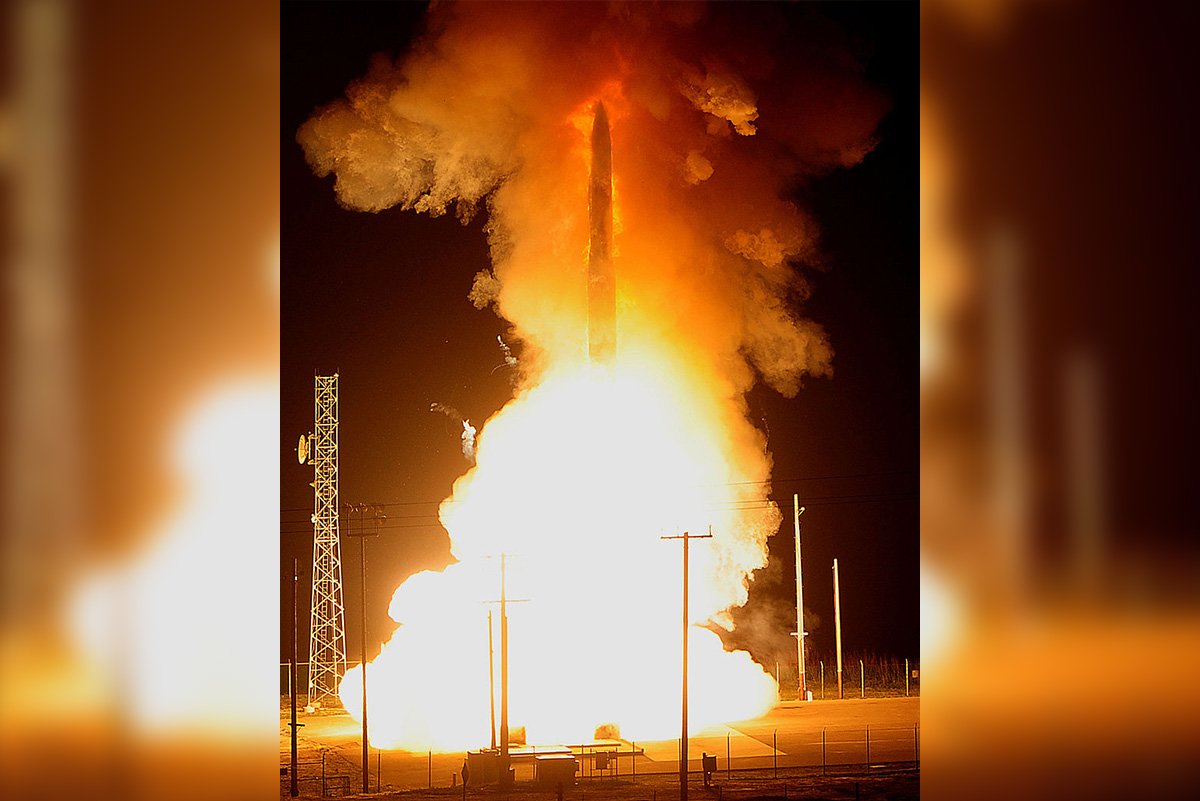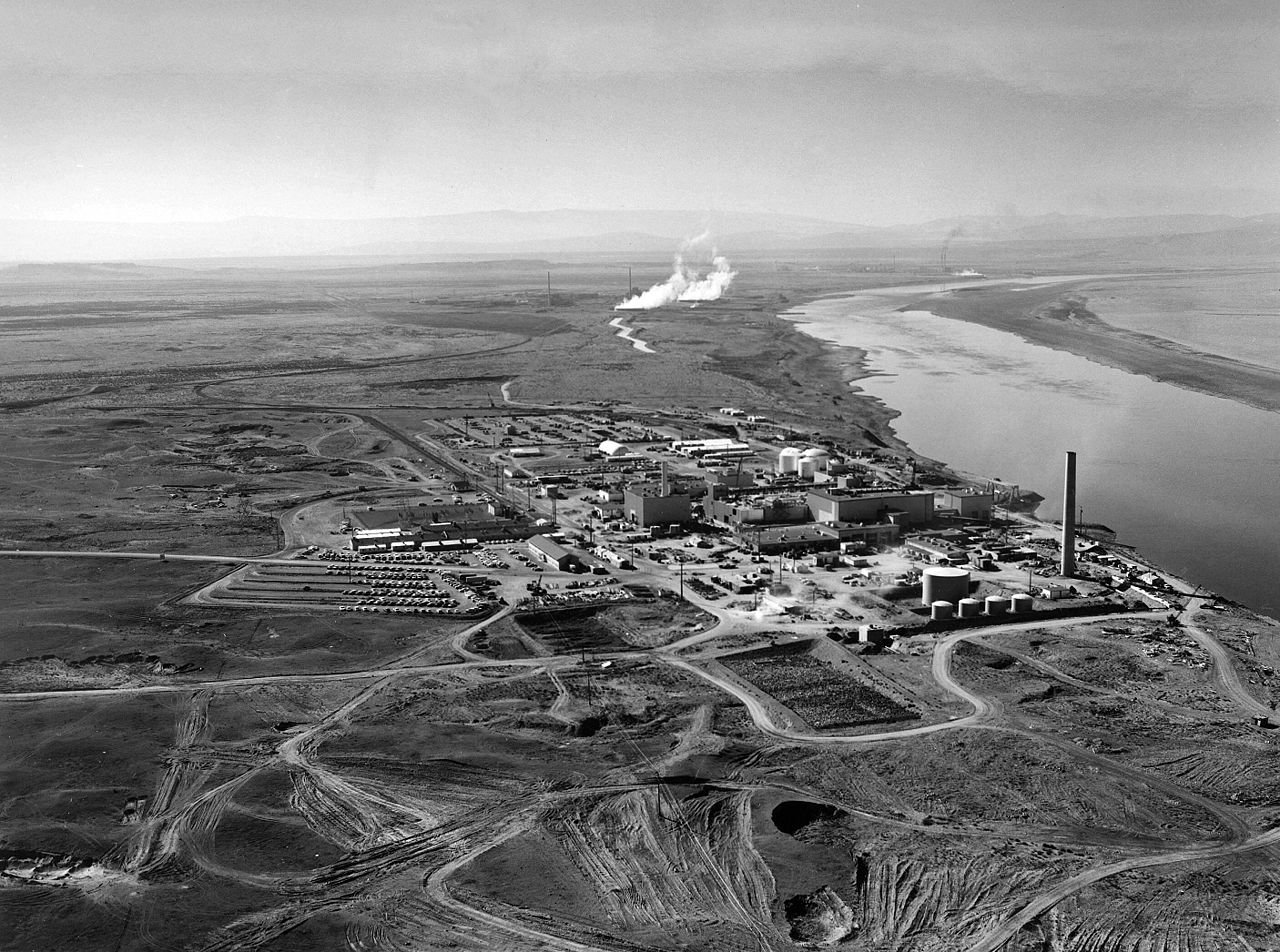Did UFOs Really Disable Nuclear-Armed American Missiles in 1967?

Vandenberg Air Force Base, California, launched an unarmed Minuteman III intercontinental ballistic missile in a test launch Feb. 25, 2012. The Minuteman III is capable of holding three warheads and has rapid target reprogramming capability. US Air Force photo courtesy of the 30th Space Wing Public Affairs.
Robert Salas’s UFO story begins as the best ones always do: on night shift, working in a top-secret facility monitoring nuclear warheads.
Then a young Air Force first lieutenant, Salas was on duty deep underground on March 14, 1967, at Montana’s Malmstrom Air Force Base when he received a phone call from the flight security controller working topside. The noncommissioned officer reported some unusual lights making strange maneuvers in the sky. It was nonthreatening but notable.
Only minutes later, the controller called back. This time his tone was frantic; over the phone, he screamed about a large, glowing red object hovering over the facility’s front gate. He and his men were ready with weapons drawn to confront whatever it was. According to an affidavit he later signed, Salas ordered the controller to not let anything past the gate.
After that, Salas woke his commanding officer, 1st Lt. Frederick Meiwald.
As Salas recounted the unfolding situation, alarms flashed red on the command console, indicating that all ten Minuteman III nuclear ICBMs under the facility’s control were unable to launch. Someone — or something — had disabled the missiles.
Some lights indicated a fault code for guidance system failure, and some of the fault lights also had the attached security violation indicators blinking brightly. It meant a security breach at the launch site. Salas quickly dispatched a team to investigate.
The team reported that personnel at the launch site had witnessed the same unexplained object, but it was already long gone.
Just as quickly as it began, the event was over. The Air Force Office of Special Investigations later told Salas not to speak about his experience again and classified the incident at the “secret” level.
Salas signed a 2010 affidavit regarding his 1967 incident, hoping the move would help other veterans come forward with their own accounts of unexplained activity. Salas, undeterred by Washington’s previous dismissals, continues his efforts to compel government officials to take veterans’ UFO experiences seriously. He also warns that UFO sightings tend to occur at nuclear weapons sites.
On Oct. 19, 2021, Salas held a press conference sharing veterans’ UFO accounts. Some had recorded their experiences before they died, such as US Navy pilot Lt. j.g. Clarence “Bud” Clem.

Clem presciently recorded his account of a January 1945 incident that he witnessed over the Hanford Site in Washington state. Hanford produced plutonium for the Manhattan Project, supplying the nuclear core that went into Fat Man, the atomic bomb the US dropped on Nagasaki, Japan, on Aug. 9, 1945.
Clem and his two wingmen saw on the ground radar that an unknown aircraft had entered the area near the plutonium facility. The two other pilots jumped into their Grumman F6F Hellcat fighter aircraft. As their 2,200-horsepower engines sputtered the propellers to life, Clem went to the radar tower to relay the readings over the radio while the pilots followed the unidentified bogey. The “glowing fireball” shot off too fast for the pilots to follow.
Clem noted that the Navy logs never reflected the intrusion.
“There does indeed seem to be some sort of nexus between UAP activity and our critical nuclear technology—whether it’s propulsion, or weapons systems and whatnot,” Luis Elizondo, former director of the Pentagon’s Advanced Aerospace Threat Identification Program, told Nextgov.
Read Next: How This World War I Choctaw Code Talker Captured 171 Germans

Lauren Coontz is a former staff writer for Coffee or Die Magazine. Beaches are preferred, but Lauren calls the Rocky Mountains of Utah home. You can usually find her in an art museum, at an archaeology site, or checking out local nightlife like drag shows and cocktail bars (gin is key). A student of history, Lauren is an Army veteran who worked all over the world and loves to travel to see the old stuff the history books only give a sentence to. She likes medium roast coffee and sometimes, like a sinner, adds sweet cream to it.
BRCC and Bad Moon Print Press team up for an exclusive, limited-edition T-shirt design!
BRCC partners with Team Room Design for an exclusive T-shirt release!
Thirty Seconds Out has partnered with BRCC for an exclusive shirt design invoking the God of Winter.
Lucas O'Hara of Grizzly Forge has teamed up with BRCC for a badass, exclusive Shirt Club T-shirt design featuring his most popular knife and tiomahawk.
Coffee or Die sits down with one of the graphic designers behind Black Rifle Coffee's signature look and vibe.
Biden will award the Medal of Honor to a Vietnam War Army helicopter pilot who risked his life to save a reconnaissance team from almost certain death.
Ever wonder how much Jack Mandaville would f*ck sh*t up if he went back in time? The American Revolution didn't even see him coming.
A nearly 200-year-old West Point time capsule that at first appeared to yield little more than dust contains hidden treasure, the US Military Academy said.












